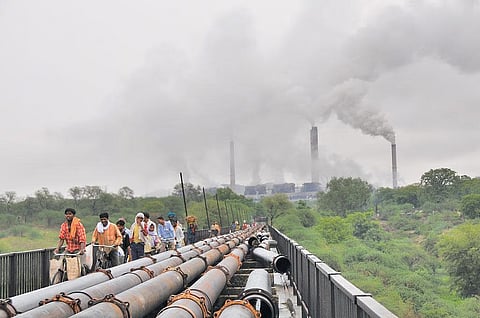Singrauli’s endless evictions: 90% of residents may have been displaced in India’s coal capital
At least 90% of Singrauli’s population has been displaced at least once, a study finds.
The region, straddling Madhya Pradesh and Uttar Pradesh, sits atop vast coal reserves.
State-run and private mega-projects have driven repeated mass evictions with little compensation.
Families like that of 82-year-old Bhagwan Prasad have been uprooted multiple times since the 1950s.
Experts say the pattern mirrors colonial-era policies and proves true rehabilitation is impossible.
Part one of a Down to Earth (DTE) series exploring the scars of displacement in Singrauli
The Singrauli region in central India is synonymous with electricity — and its impact, displacement. For decades, power generation has been held up as a symbol of development, while its human cost is measured in lives uprooted. At least five generations here have lived through repeated evictions, with no certainty that the cycle will end.
Today, the original town of Morba faces demolition.
“It has been more than seventy years, yet there is no stability in my life,” said 82-year-old Bhagwan Prasad. “Every day and night, I worry that a government official will knock at my door with a notice in hand.”
Prasad is not alone. Millions of people in this industrial heartland share his fate, their lives unsettled by repeated waves of “development”. “My life is almost over,” he told DTE, “but I worry constantly that my future generations will be evicted from their land five times, just like me.”
A report by Lena Dokuzovic of the Centre for Advanced Studies in South East Europe estimated that 90 per cent of Singrauli’s total population has been displaced at least once. It is a grim reality the government continues to ignore.
Coal and power at any cost
Singrauli district lies in a remote corner of north-central India, straddling the border between Madhya Pradesh and Uttar Pradesh. Declared a district only in 2008, it was previously a tehsil of Sidhi. The region, spanning some 1,800 sq km and encompassing around 400 villages, sits atop one of the largest coal reserves in South Asia.
This coal has fuelled an industrial hub that includes state-owned giants such as National Thermal Power Corporation or NTPC, Northern Coalfields and Coal India, alongside private sector mega-projects run by Reliance Power, Jaypee Power Ventures, Hindalco, Mahan Aluminium, Sasan Ultra Mega Power Project and Lanco. But the price has been paid by the people, the land and the forests.
To clear the way for mines, power plants and dams, mass displacement has been carried out for decades, often with force, scant compensation and harsh suppression of local resistance. Nearly 300,000 people like Bhagwan Prasad have been uprooted multiple times, left waiting to see when the next eviction will come.
Cycles of ‘development’
Sandeep Srivastava, who has worked in Singrauli for four decades, claimed that three major political and historical phases can be used to define “development” in India, forms that are mirrored in many other parts of the world. These are colonialism, independence and nationalisation, and globalisation.
Further, India’s development story can be divided into three broad post-independence phases, he argued. These are, the first wave of large dams, the era of mega electricity projects and the privatisation drive of recent decades. Each has fuelled further displacement in Singrauli, continuing patterns laid down under colonialism.
“For example, the Indian Forest Act,” he noted, “radically transformed the relationship between the state and forests.” Local records show how the law, designed to give the state a monopoly over forests, laid the foundations for the extractive model that Singrauli embodies.
Prasad recalls arriving in the area in the 1950s to earn a living at what was being touted as a new industrial centre. “The water was not even fit to drink,” he said, “but somehow we managed odd jobs and settled.” By 1960, the coal beneath his settlement was discovered and the community was driven out, compensated with what he called a pittance.
Since then, he has been displaced multiple times, each time promised better compensation, each time disappointed. “For ten years, I have heard that Morba will be demolished and this time, rehabilitation will be done properly. But I don’t believe it. Why does the government keep lying to us? It has been rehabilitating us again and again for years. It is impossible to rehabilitate anyone properly.”
His words echo a stark conclusion from the World Bank’s Morse Committee in 1994: It is impossible to truly rehabilitate the displaced. “You cannot evict someone from his home,” the report stated, “and provide him with similar conditions elsewhere.” For Singrauli, the lights that power India’s cities are built on the darkness of endless displacement.


